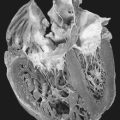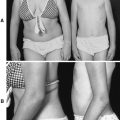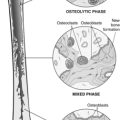91. Zollinger-Ellison Syndrome
Definition
Zollinger-Ellison syndrome (ZES) is a typical, intractable, possibly fulminating, peptic ulcer associated with extreme gastric hyperacidity.
Incidence
In the United States ZES is estimated to occur in 0.1% to 1% of all patients who have duodenal ulcers. Internationally the incidence of ZES varies; for example, Sweden reports 1:1,000,000 to 3:1,000,000; Ireland reports 0.5:1,000,000; and Denmark reports 0.1:1,000,000 to 0.2:1,000,000. ZES has been reported in all races. Males are slightly more likely to be affected than females by a ratio of 1.3:1. The mean age of onset is 43 years.
Etiology
The majority, about 75%, of ZES cases are the result of a non–β-islet cell, gastrin-secreting pancreatic tumor that stimulates the stomachs acid-secreting cells to their maximum output. The result is profound hyperacidity that can erode gastrointestinal mucosa to the point of ulceration. The remaining ZES cases result from an autosomal dominant familial syndrome, multiple endocrine neoplasia type I (MENI). In MENI, the primary tumor may be found in the duodenum, pancreas, or abdominal lymph nodes but may also be found in so-called ectopic areas, including the heart, ovaries, gallbladder, liver, or kidneys.
Signs and Symptoms
ZES
• Abdominal pain
• Diarrhea
• Gastrointestinal bleeding
• Heartburn
• Hypergastrinemia
• Hyperparathyroidism
• Malabsorption
• Nausea
• Pancreatic endocrine tumor
• Pituitary tumor(s)
• Vomiting
• Weight loss
MENI ZES
• Gastrinoma
• Hypercalcemia
• Hyperparathyroidism
• Nephrolithiasis
Medical Management
The treatment goals for ZES are (1) control hypersecretion of gastric acid, and (2) surgical resection of the causative tumor. The most effective pharmacologic intervention is the use of intravenous proton pump inhibitors. Proton pump inhibiting agents have demonstrated superiority to histamine (H 2)-blocking agents in achieving rapid control of gastric acid hypersecretion.
The causative tumor, usually a non–β-islet cell tumor of the pancreas, should be identified. Computed tomography (CT), somatostatin receptor scintigraphy (SRS), and endoscopic ultrasound are the most sensitive methods of identifying and localizing the tumor, as well as evaluating for evidence of metastasis of the tumor. Most patients with ZES (those with sporadic ZES) who do not demonstrate hepatic metastasis, should have the tumor surgically resected to reduce the possibility of liver metastasis. Surgical resection is more likely curative of a sporadic ZES tumor than it is for MENI/ZES, which is rarely cured by surgical intervention.
Complications
• Bowel obstruction
• Duodenal perforation
• Esophageal stricture
• Gastric carcinoids
• Hyperkalemia
• Hypovolemia
• Jejunum perforation
• Metabolic alkalosis
Anesthesia Implications
Before anesthesia, the patient with either form of ZES should be assessed for his or her state of hydration, electrolyte levels, and metabolic balance. ZES may be accompanied by profuse watery diarrhea, which can quickly produce significant dehydration, electrolyte imbalances (particularly hypokalemia), and metabolic alkalosis. From this preoperative evaluation, it may be necessary to initiate rather intense fluid resuscitation, with electrolyte supplementation, before inducing anesthesia. Induction of anesthesia with a patient significantly dehydrated can produce profound hypotension. A preoperative 12-lead electrocardiogram should be obtained to detect any dysrhythmic activity that might be related to or result from the diarrhea-induced electrolyte imbalance.
The patient with hepatomegaly and/or suspected liver metastasis should be screened preoperatively for coagulation ability as well as liver function. Liver metastasis can result in alterations in fat absorption, which can alter production of clotting factors and impair overall liver function. If these test results show significant alteration, the anesthetist should anticipate greater-than-normal blood volume losses, along with prolongation of action of many anesthesia-related medications.
The patient with ZES is medically managed with various combinations of H 2-receptor antagonists and proton pump inhibiting agents. The anesthetist must ensure continuation of those medications perioperatively. Intravenous ranitidine has demonstrated particular effectiveness in preventing intraoperative hypersecretion of gastric acid. The anesthetist should also place a nasogastric tube to evacuate the stomach and keep it as empty as possible throughout the surgery and anesthesia.
Finally, but very importantly, gastrin typically increases lower esophageal sphincter tone. However, gastroesophageal reflux disease (GERD) is commonly associated with ZES. The anesthetist should employ classic rapid sequence induction precautions to minimize the potential for reflux and aspiration. At the end of surgery, the patient should be almost fully awake with intact airway reflexes before the trachea is extubated. The patient should also be transported to the post-anesthesia care unit with the head of the bed or stretcher elevated a minimum of 30 degrees to reduce the potential for regurgitation and aspiration.







